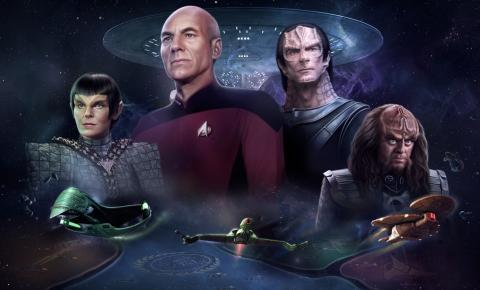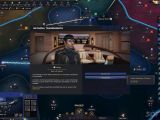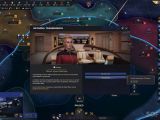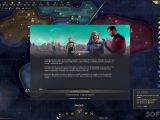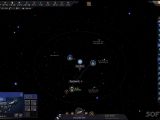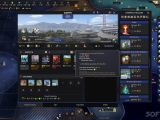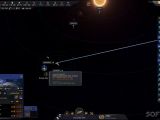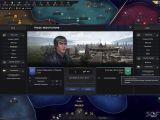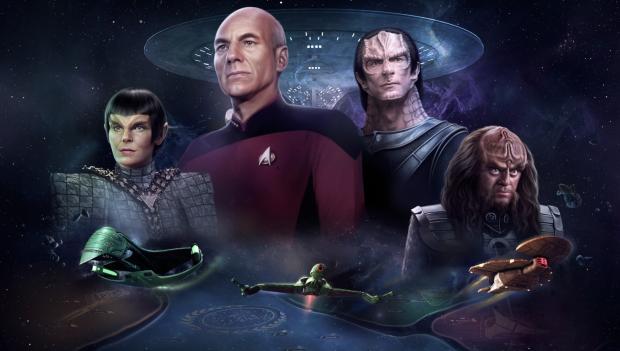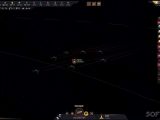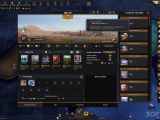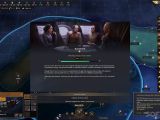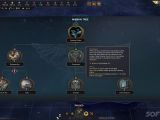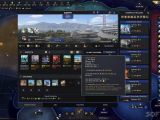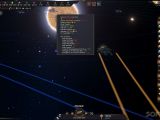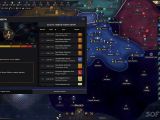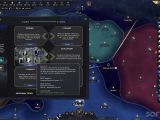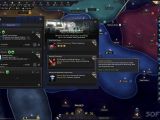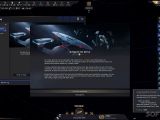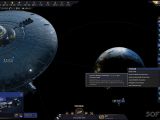The Federation is generating enough Unity to quickly gain traditions. We’ve just completed Progress, which has made our faction both more competitive and more democratic, and we’re now working on Research to get better at unlocking the core secrets of the galaxy. After all, we’re boldly going where no one has gone before, with a half dozen science ships exploring as far as possible.
But tensions are rising in the Alpha and Beta quadrants, mainly because the Dominion seems very determined to take planets from the Klingons while the Romulans might have designs on some of our worlds. A shift in strategy is needed, which involves more buildings that can generate resources for shipbuilding. Research might also need to be redirected to make sure we have better weapons than our potential adversaries.
We’ve integrated two new Federation members since we made first contact with them, but our envoys are having trouble dealing with the major powers. We’re also not great at spying, which means the Romulans might launch a strike that takes us entirely by surprise. Our overall performance will also be affected by our rapid expansion. It’s time to improve our administration and raise stability, although hiring extra governors will suck up resources.
Star Trek: Infinite was developed by Nimble Giant Entertainment and published by Paradox Interactive. I played using Steam on the PC. The title mixes a popular science-fiction universe with grand strategy, space-based mechanics.
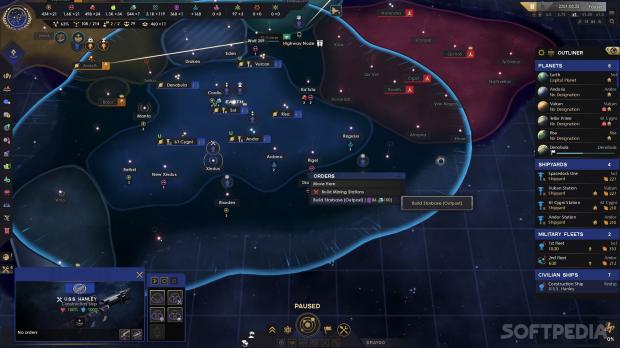

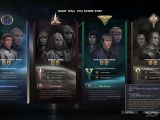
The game is inspired by the Picard era of Star Trek when the United Federation of Planets is engaged in exploration of the Alpha and Beta quadrants of the galaxy but is also competing with three powerful stellar polities, the Klingon Empire, the Cardassian Union, and the Romular Star Empire. Gamers lead their chosen faction, dealing with everything from planet development and exploration to diplomacy, tech development, espionage, and war.
The Next Generation theme gives the game a very classic science-fiction feel. Plenty of races are featured as minor powers and all come complete with flavor in terms of political systems and traits. There are a ton of events and choices that draw inspiration from the television series. Writing for the many events is good. Well-known characters can be recruited and bring flavor, although seeing Admiral Picard die after a long career as a fleet leader remains a little weird.
Infinite uses Mission Trees to guide players, tailored to fit their governing philosophy but also to offer some interesting “what if” options. As the Federation, do try to build the Enterprise as quickly as possible. The game also features a solid tutorial and an in-universe hint system. This is a complex game that should feel familiar to anyone who has played Stellaris, but newcomers will need some time to see how the many mechanics interact with each other.
On the solar system level, players choose how to develop planets and starbases (which support warp travel and shipbuilding). Construction ships move around to construct mining and research stations. Governors can offer bonuses and each planet can receive a specialization. A science ship needs to fully survey a system and a starbase is required to expand territory and then create new colonies.
When players zoom out to look at the entire galaxy, they can direct their fleets for exploration and combat purposes. It’s a big universe out there, filled with anomalies to investigate and warp highways that enable long-range travel. First-contact opportunities abound, and a limited number of envoys means diplomacy cannot solve all problems.
Players have to take into account Spread and planet stability as they expand, which is where governors and planetary edicts can be effective. Infinite features an array of resources to juggle, and it can be easy to use event choices to get extra rather than role-play as the gamer’s chosen faction.
Three technologies are researched concurrently, opening up extra development and shipbuilding options. Spies can cripple enemy infrastructure, although their failure rate is high. Combat between fleets is mostly decided by who has the numbers advantage and the better admiral. Often the biggest military threats aren’t the navies of the other big powers but something big and cube-shaped arriving from another quadrant.
Arguably the most important resource in Star Trek: Infinite is Unity, used to unlock traditions. These give factions significant bonuses and completing a branch grants an even more powerful ascension perk. I was disappointed with the limited number of traditions offered and hope that the developers plan on increasing the variety.
The strongest part of Infinite is the early game, when there are plenty of paths to take and many systems and anomalies to explore. The game captures the feeling of discovery that much of classic Star Trek was built on. Regardless of the chosen faction, I had the most fun when I role-played rather than simply min-maxing. Combat is the game’s least interesting element, and more depth is also needed for internal politics and espionage.
Star Trek: Infinite works hard to map the visual identity of The Next Generation on a grand strategy experience. The effort is successful most of the time, with plenty of characters and illustrations drawn directly from the fictional universe. But there are also times when the game simply looks like a skin on classic Stellaris, which affects the general immersion level. The user interface is fairly easy to understand and use.
The sound design is not as interesting. It has all the effects from the series used at the right times and plenty of verbal announcements that draw attention to important events. Klingon is used for the tutorial system when playing the Empire. But the soundtrack, despite trying very hard, doesn’t reach the, admittedly, lofty heights of the series’ music.
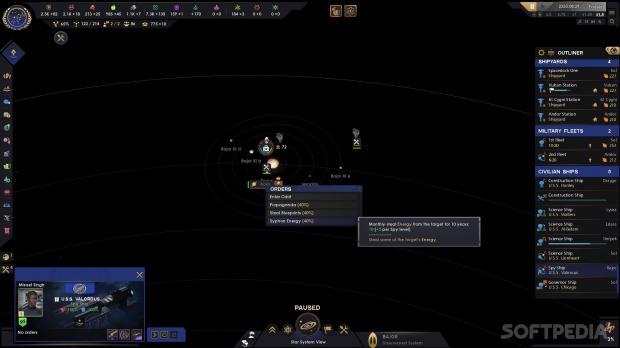
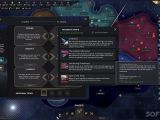
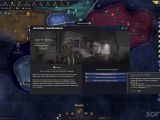
The Good
- Good use of the Star Trek universe
- Solid strategy mechanics
- Focus on exploration and first contact
The Bad
- Some mechanics feel limited
- Interface takes time to master
- Needs a better soundtrack
Conclusion
Some players have been complaining of game-stopping bugs, which have not impacted my campaigns, so it might be a good idea to wait for a patch or two. Some mechanics, like spies and governors, also feel under-backed. But the ability to create stories and play out scenarios makes Star Trek: Infinite a great experience for both veterans and newcomers to the grand strategy space.
Review key provided by the publisher.
 14 DAY TRIAL //
14 DAY TRIAL // 